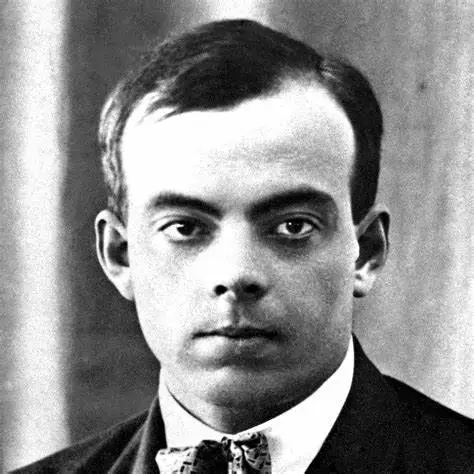Have you ever set a goal, full of excitement, only to find yourself losing steam a few weeks later?
That feeling of motivation fading away is frustrating, right? Well, the good news is that it doesn’t have to be this way. An action plan for target achievement can change everything!
In this article you’ll discover:
- What an action plan actually is.
- Why having an action plan is a huge advantage.
- The benefits of tailoring an action plan to your own goals.
Let’s get started!
"By failing to prepare, you are preparing to fail."
 Benjamin Franklin
Benjamin Franklin Understanding an Action Plan for Target Achievement
Think of an action plan as your personal roadmap to success. It’s a way to break down any big goal – whether it’s in your career, your fitness, or your personal life – into smaller, more manageable steps.

This means you’re always moving forward, even when the end goal seems far away. Let’s dive deeper into what exactly an action plan is and why it matters so much.
What is an Action Plan?
In its simplest form, an action plan is a detailed outline of the steps you need to take to reach your goal. It’s a strategic document that includes:
- Specific tasks: The individual actions required to get closer to your goal.
- Timelines: When you aim to complete each task or reach specific milestones.
- Resources: What tools, support, or knowledge you’ll need along the way.
An action plan turns a vague dream into something concrete and achievable. It’s like having a GPS for your goals – you know exactly where you’re going and how you’ll get there.
The Importance of the Action Plan
You might be wondering, “Can’t I just wing it and still reach my goal?” Well, technically you could, but having an action plan dramatically increases your chances of success.
An action plan gives you focus and clarity, eliminating that constant feeling of “what do I do next?“. You’ll always have a clear direction for your energy.
It also works as a huge motivation booster! Seeing progress and checking off those tasks keeps you engaged. Big goals can be intimidating, but an action plan breaks them down into manageable chunks, making the whole process less overwhelming.
"The journey of a thousand miles begins with a single step."
 Lao Tzu
Lao Tzu Plus, if anything unexpected happens, you can more easily pinpoint the issue and adjust your approach.
Benefits of Creating an Action Plan for Yourself
An action plan isn’t just a useful tool, it can have a significant positive impact on your overall success and well-being. Here are some key benefits:
- Increased Accountability: When you’ve written down your steps, you’re more likely to follow through than if they’re just floating around in your head.
- Better Time Management: An action plan helps you allocate your time more effectively, making sure you’re working on the right things at the right time.
- Greater Confidence: As you make progress, your confidence in your abilities grows, making you even more likely to push forward.
- Reduced Stress: Having a clear plan combats that overwhelmed feeling, making goal-chasing a smoother and more enjoyable process.
An action plan helps you take that first step, and all the steps after that, with purpose.
Guide to Create Your Own Action Plan
Alright, now that you understand what an action plan is and why it’s so valuable, it’s time for the fun part – creating your own!
This step-by-step guide will make it super easy to turn your goals into a structured plan, ensuring you’re set up for success. Let’s get started!
1. Define Your Goal
The foundation of any successful action plan is a clear, well-defined goal. It’s your guiding star, keeping you focused and motivated. Here’s how to make sure your goal is set up for success using the SMART framework:

- Be Specific: The more specific your goal, the easier it is to map out the steps to get there. Instead of “improve my finances,” try “save $5,000 for an emergency fund by the end of the year.”
- Make it Measurable: How will you know you’ve achieved your goal? Attach numbers or tangible outcomes. Instead of “eat healthier,” try “eat three servings of vegetables per day.”
- Is it Achievable?: Aim high, but be realistic. Breaking down big dreams into smaller, achievable goals prevents burnout and keeps you motivated.
- Does it Align with Your Values?: Goals you’re genuinely excited about are much easier to pursue. Check in with yourself – does this goal truly matter to you?
- Write it Down in Detail: Putting your goal on paper (physical or digital) makes it feel real and reinforces your commitment. Include your motivation – why is this goal important to you?
Research found that 42% of people find it beneficial to write down their goals.
Example: A vague goal like “get in shape” could be transformed into a specific, measurable goal like “Complete a beginner Couch to 5K program and run a 5K race in under 40 minutes within 3 months.”
2. Break It Down Into Smaller Steps
Once you have a crystal-clear goal, it’s time to dissect it into smaller, achievable tasks. This is where the magic of the action plan really shines!
- Start From the End: Begin with your ultimate goal and work backward. What are the major milestones you need to reach along the way?
- Get Granular: Break down those milestones into smaller and smaller tasks until you have very specific actions you can take.
- Be Realistic: Consider the time and effort each task will actually require. Don’t overload yourself!
Example: If your goal is to run a 5K race, your sub-steps might look like this:
- Milestone 1: Find a beginner running plan (Couch to 5K)
- Task 1.1 - Research different Couch to 5K programs.
- Task 1.2 - Choose a program and download the schedule.
- Milestone 2: Purchase necessary gear.
- Task 2.1 - Find a good pair of running shoes.
- Task 2.2 - Buy comfortable running clothes.
And so on…
"A goal without a plan is just a wish."
 Antoine de Saint-Exupéry
Antoine de Saint-Exupéry Keep breaking things down until your action items are small enough to tackle in a single session or a few days at most!
3. Set Deadlines
Deadlines are a powerful motivator! They add a sense of urgency and give you a target date to work towards. Here’s how to set effective deadlines:
- Overall Timeline: When do you want to achieve your main goal by?
- Milestone Deadlines: Work backwards, assigning deadlines to each milestone necessary to reach that big goal.
- Task-level: Even small tasks should have deadlines to prevent procrastination and keep you on track.
- Be Realistic (But Slightly Ambitious): Don’t make it completely impossible, but a little bit of a challenge sparks motivation.
- Allow Flexibility: Don’t panic if you miss a small deadline here and there. Adjust your plan and keep going!
Use a calendar, planner, or project management tool to visualize your deadlines and stay organized. Seeing everything laid out can be incredibly motivating.
4. Identify Necessary Resources
Before you dive in, consider what tools, support, or knowledge you’ll need to succeed. Proactive planning now saves frustration down the road!
- Physical Resources: Do you need equipment, software, books, or workspace upgrades to achieve your goal?
- Financial Resources: Are there costs involved, like training courses, gym memberships, or materials?
- Knowledge and Skills: Will you need to learn anything new? Can you find tutorials, online courses, or mentors?
- Support Network: Do you have friends, family, a coach, or an online community who can support and advise you?
Example: If your goal is to start a side hustle, your list of necessary resources might include:
- A website builder
- Budget for online advertising
- A mentor or business coach
- A supportive community of fellow entrepreneurs
Make a detailed list of what you need and start gathering these resources early in your journey.
5. Anticipate Obstacles and Solutions
No matter how well-planned things are, you’re likely to encounter some bumps in the road. This step is about being proactive so those challenges don’t derail your progress.
- Brainstorm: What could potentially hold you back? Possible distractions, lack of time, self-doubt, unexpected events… get creative!
- Problem Solving: For each obstacle, come up with at least one potential solution or workaround.
- Reframing: Obstacles are not failures. They’re opportunities to learn, adapt, and find new ways forward.
Example: If you anticipate feeling unmotivated on some days, potential solutions could be:
- Partnering with an accountability buddy
- Scheduling rewards for completed tasks
- Breaking down work into even smaller, super manageable chunks

By having a plan in place, you’ll be far less likely to get discouraged or give up when challenges arise.
6. Monitor Your Progress and Adjust
Your action plan isn’t set in stone - it’s a dynamic tool! Regularly reviewing your progress is vital for identifying what’s working, what’s not, and where you might need to adapt your plan.
- Track Your Progress: Choose a tracking method that suits you: calendar, journal, or an app. Celebrate each step completed, no matter how small!
- Reflection Time: Schedule regular check-ins with yourself. Analyze what’s working well and pinpoint areas needing adjustment.
- Flexibility is Key: Did a task take longer than expected? Did you discover a better method? Adjust your plan accordingly – it’s about progress, not perfection!
- Be Kind to Yourself: If you fall behind, don’t beat yourself up. Acknowledge, adjust, and keep moving forward!
Visualizing your progress can be incredibly motivating. Try a progress bar, a checklist, or a colorful graph!
7. Celebrate Wins!
Achieving a goal, no matter how big or small, is worth celebrating! Acknowledging your accomplishments has a powerful impact on your motivation, keeping you excited about the journey ahead.
- Celebrate Every Milestone: Every time you check off a task or hit a deadline, take a moment to savor that success!
- Rewards that Matter: Choose rewards that genuinely motivate you. A relaxing bath, a favorite treat, an experience…it doesn’t have to be extravagant!
- Share your Success: Tell a friend, family member, or an online community supporting your goals. Positive reinforcement is fuel!
- Reflect on Your Growth: Celebrating isn’t just about having fun. It’s about recognizing how far you’ve come and the skills you’ve gained along the way.
Don’t underestimate the power of celebration – it keeps you engaged, motivated, and ready to keep crushing those goals!
Start Chasing Goals with Your Action Plan
You’ve done the hard work: you’ve defined your goal, broken it down, and crafted a rock-solid action plan. Now, it’s time for the most exciting part – putting that plan into action!
We will give you helpful tips and strategies for turning those action items into real-world progress and staying motivated throughout the journey. Are you ready to get started?
Tips to Implement it on Your Daily Routine
An action plan is fantastic, but it only works if you actually put it into action! Here are some key strategies to seamlessly integrate your plan into your daily routine:
- Schedule Your Tasks: Block out specific times in your calendar for working on your action items. Treat these appointments like any other important commitment.
- Start Small: Don’t overwhelm yourself – begin with small, achievable tasks to build momentum and confidence.
- Batch Similar Tasks: Group similar tasks together to improve your focus and efficiency. For example, answer emails in one focused session rather than throughout the day.
- The Power of Habits: Try to link your goal-related tasks with existing habits. For example, read industry articles during your morning coffee break.
- Utilize Reminders and Alarms: Don’t rely solely on willpower! Set reminders on your phone or use a project management tool to stay on track.
- Track Your Progress: Seeing your progress visually is incredibly motivating! Use a checklist, progress bar, or colorful chart to celebrate your accomplishments.
Remember, consistency is key! Focus on taking small, steady steps each day, and you’ll be amazed at how quickly you move closer to your goals.
Strategies to Overcome Common Obstacles
No matter how dedicated you are, it’s natural to encounter bumps in the road when pursuing your goals. The key is to be prepared and proactive with solutions!
Here’s a breakdown of the most common obstacles and how to conquer them:
| Obstacle | Strategies |
|---|---|
| Lack of Motivation | Find your “why,” break down tasks, reward yourself, and find an accountability partner. |
| Procrastination | Use the Pomodoro Technique (work in short bursts), tackle the hardest task first, and eliminate distractions. |
| Self-Doubt | Challenge negative thoughts, focus on past successes, and practice positive affirmations. |
| Time Constraints | Prioritize ruthlessly, delegate where possible, say “no” to non-essential commitments, and maximize efficiency. |
| Unexpected Setbacks | Remain flexible, assess the situation, brainstorm alternative solutions, and seek support if needed. |
Case Study: Laura’s Time Management Struggle
Many of us can relate to Laura’s experience. She’s a busy college student trying to balance her studies, a part-time job, and her social life.
Unfortunately, this juggling act leads to overwhelm, missed deadlines, and a lack of quality downtime. Laura is determined to find a solution.

Her main goal is to improve her time management skills, freeing up valuable hours, reducing stress, and boosting her academic performance.
Applying the Action Plan Steps
While Laura’s problem might feel overwhelming, an action plan can break it down into manageable steps. Let’s see how she can apply the steps we outlined earlier to create a personalized plan for success:
1. Define Your Goal: Laura gets specific: “I want to gain an extra 10 hours of free time per week by improving my study efficiency and minimizing distractions.”
2. Break It Down Into Smaller Steps:
- Milestone 1: Analyze current time usage (time-tracking app)
- Milestone 2: Identify top time-wasters (social media, disorganized workspace)
- Milestone 3: Implement time management techniques (schedule, Pomodoro method, “no phone” zones)
3. Set Deadlines: Laura gives herself one week to track her time, a few days to identify improvement areas, and two weeks to test and refine her new time management strategies.
4. Identify Resources:
- Time-tracking app
- Resources on time management techniques and study tips
- Support from a fellow student or an online study community
5. Anticipate Obstacles:
- Procrastination/distractions: Accountability buddy, reward system
- Old habits creeping back in: Consistent reminders and self-reflection
6. Monitor and Adjust: Laura will assess her progress after implementing her strategies, noting improvements, and areas still needing work.
7. Celebrate Wins! Every time Laura hits a milestone or gains more free time, she’ll reward herself and acknowledge the positive change.
Outcome: By using an action plan, Laura isn’t just hoping for improvement, she’s creating a structured path to achieve her time management goals. This proactive approach is likely to lead to a far greater chance of success!
Conclusion
An action plan is a powerful tool for turning dreams into reality. Whether your goal is personal growth, career advancement, or something completely different, the step-by-step process we’ve outlined empowers you to take control of your progress.
Remember, an action plan is a living document – adapt and adjust it as you go along. Celebrate your achievements, learn from your setbacks, and never stop reaching towards your goals!
Next Steps for You
- Choose a Goal: What’s one important goal you’d like to achieve? It can be anything!
- Start Your Action Plan: Use the guide in this article to start crafting your personalized plan, beginning with defining your goal.
- Take Action (Even a Small One)!: The planning is important, but the magic happens when you start taking steps toward your goal.
"Begin with the end in mind."
 Stephen Covey
Stephen Covey You’ve got this! And if you’re feeling a little overwhelmed, start small - even one tiny action step propels you forward on your journey.
Frequently Asked Questions
What is target achieving?
Target achieving refers to the process of setting a specific goal (a target) and successfully reaching it through a series of planned and executed actions.
How do you write a 30-day action plan?
Start with a goal you want to achieve within the next 30 days. Next, break down that goal into smaller tasks that can be realistically completed within that timeframe.
Assign deadlines to each task, keeping your final objective in mind, and schedule those tasks into your calendar.
What if I don’t have a specific goal in mind?
This is perfectly okay! Sometimes, the best way to find a goal is to explore. An action plan can help.
Start by brainstorming areas of your life where you’d like to see improvement, explore new hobbies, or set a goal to try something completely new each week.
The action planning process itself can lead to exciting self-discovery!
What if something unexpected comes up and disrupts my plan?
Flexibility is key! Don’t view setbacks as failures, view them as opportunities to learn and adjust your strategy. Sometimes, the most valuable lessons happen when things don’t go according to the original plan.
What are examples of action plans?
Action plans can be used for all kinds of goals! Here are a few examples:
- Career Goal: Create an action plan to prepare for a job interview, negotiate a raise, or start a side hustle.
- Personal Development Goal: Build a consistent workout routine, learn a new language, or improve your public speaking skills.
- Life Change Goal: Plan a move, declutter your home, or start a garden.




